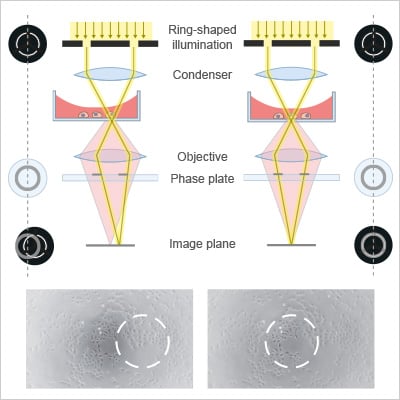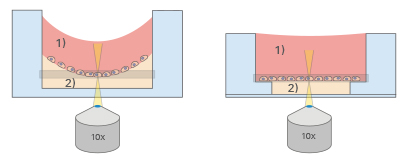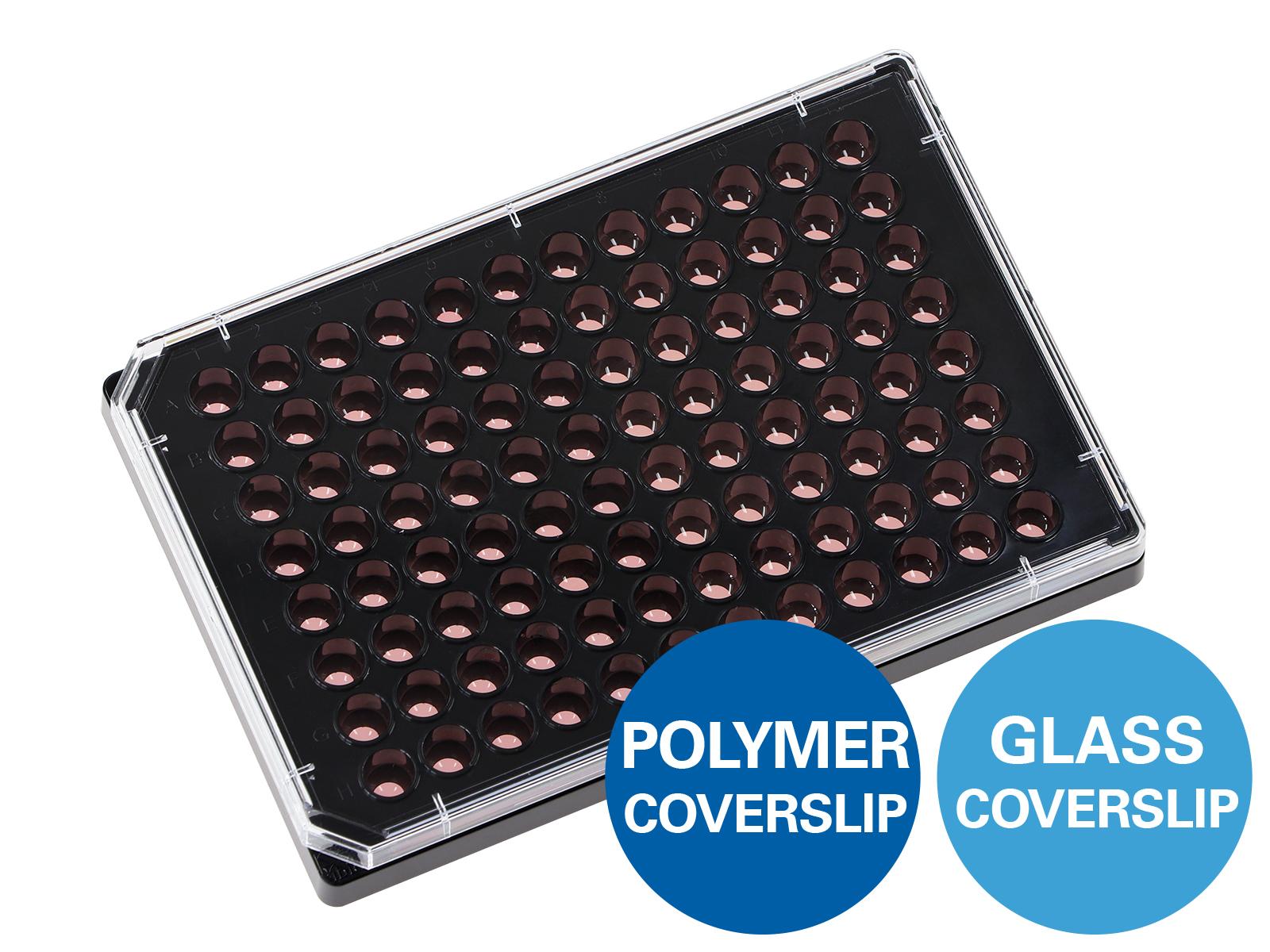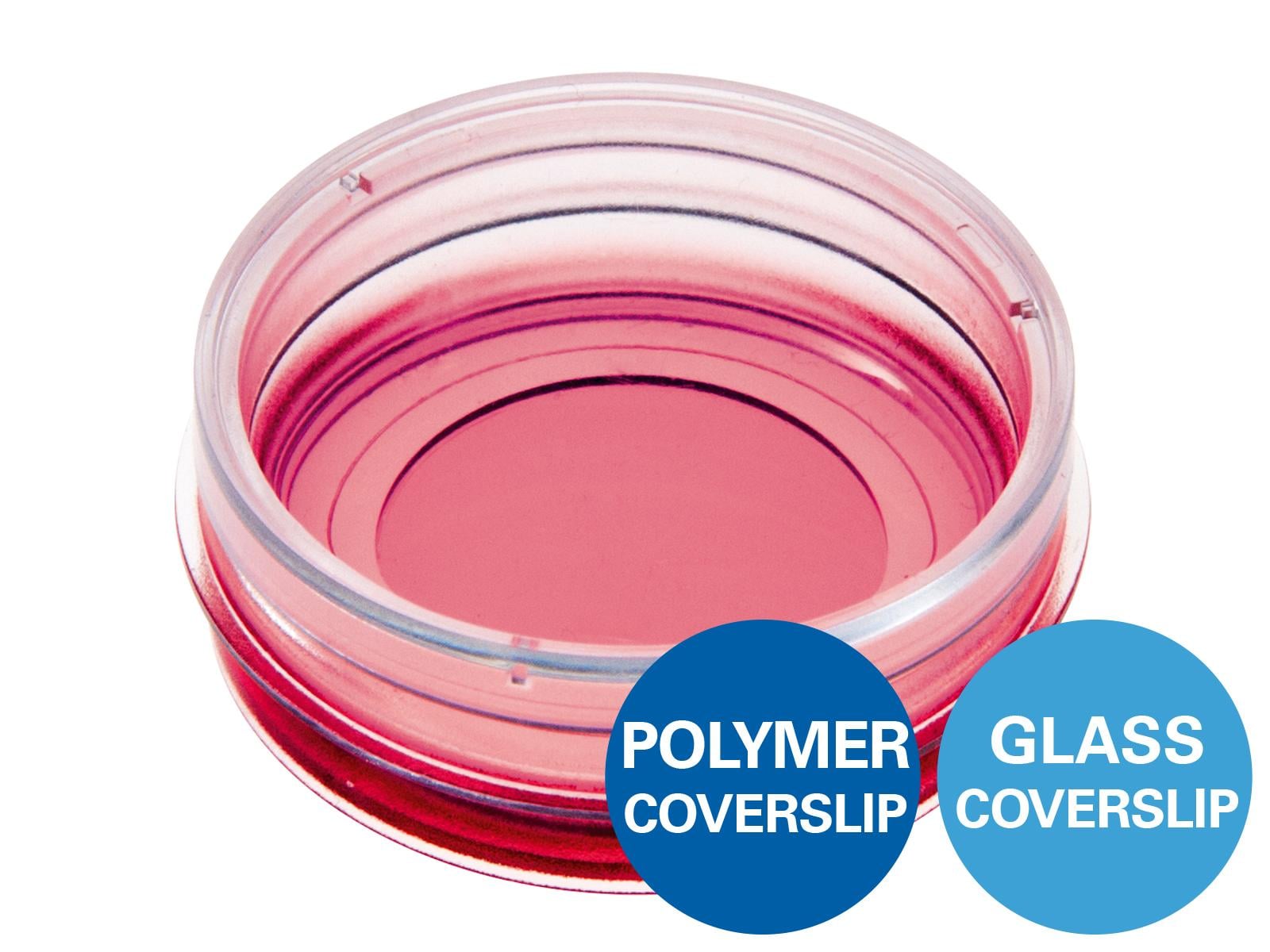Phase Contrast Microscopy – Principle, Applications, and ibidi Solutions
What Is Phase Contrast Microscopy?
Phase contrast microscopy is one of the most widely used techniques in biological light microscopy. It is a label-free microscopy technique that enables the visualization of unstained living cells in their native environment—without the need for chemical fixation or fluorescent labeling. This technique is indispensable in cell culture laboratories and live cell imaging, providing critical insights while preserving cellular viability and function.
How Does Phase Contrast Microscopy Work?
The Key Principle: Optical Phase Conversion
Unstained living cells absorb practically no light and therefore appear nearly transparent under conventional brightfield microscopes. However, as light passes through these cells, it experiences small phase shifts due to differences in refractive indices between cellular components and the surrounding medium, which are almost invisible to the human eye.
A phase contrast microscope transforms these small phase shifts into variations in light intensity, resulting in high-contrast images.
This is achieved using both an annular ring located in the condenser and a phase ring located in the back focal plane of the objective. The annular ring creates a tube-shaped illumination, which is selectively shifted by the phase ring in the objective—usually by ±90° (λ/4)—to interfere constructively or destructively with scattered light, coming from the sample. The resulting amplitude changes reveal otherwise invisible cellular structures.
What Are the Applications of Phase Contrast Microscopy in Cell Biology?
Phase contrast microscopy is a widely used, cost-effective, and non-destructive imaging technique that plays a critical role in cell biology. Unlike fluorescence-based methods, it requires no staining or labeling, which eliminates the risk of photobleaching and minimizes sample exposure to high-intensity light. This makes it particularly suitable for live cell imaging, where maintaining cell viability is essential.
Because to its ability to enhance contrast in transparent, unstained samples, phase contrast microscopy is ideal for:
- Cell-based assays including migration, chemotaxis, angiogenesis and many more
- Live cell imaging without labeling
- Monitoring cell morphology, proliferation, and motility
- Quality control in cell culture workflows
- Time-lapse imaging of cell behavior
Its non-invasive nature allows for continuous monitoring of living samples over extended periods.
How Can I Optimize My Phase Contrast Images?
The quality of phase contrast images depends strongly on the precise alignment of the annular ring with the phase ring. However, even with perfect alignment and the elimination of other mechanical disturbances, optical aberrations—such as those caused by meniscus formation—can degrade image quality. The meniscus of the cell culture medium at the air–liquid interface acts as a lens, disrupting the precisely aligned light path of the microscope. This effect is particularly pronounced in small wells, such as those in standard 96-well plates, where the meniscus curvature is more pronounced. In summary, achieving high-contrast images requires (i) precise alignment of the phase and annular rings to optimally adjust the light path and (ii) the use of suitable labware to minimize interference from the meniscus effect.
F. Zernike. "Phase contrast, a new method for the microscopic observation of transparent objects". Physica, 1942, part I: 10.1016/S0031-8914(42)80035-X, part II: 10.1016/S0031-8914(42)80079-8.
read abstract part I / part II
E. Horn, R Zantl. Phase-Contrast Light Microscopy of Living Cells Cultured in Small Volumes. Microsc Anal, 2006, 20(3):5–7
read abstract
 | |
Beam path with meniscus | Beam path without meniscus |
ibidi Solutions for Enhanced Phase Contrast Imaging
To obtain high-quality phase contrast images, it’s essential to minimize optical artifacts—such as the meniscus effect—by using appropriate labware. ibidi offers a range of labware geometries, including specialized designs that reduce or eliminate meniscus formation, ensuring a flat imaging surface and consistent optical alignment
Available with either #1.5 Polymer Coverslip Bottom or 1.5H Glass Coverslip Bottom—both deliver exceptional optical quality and high-contrast phase contrast imaging.
ibidi Channel µ-Slides
The ibidi Channel μ-Slides provide ideal optical conditions for phase contrast microscopy. When culturing cells, the channel is filled with medium from bottom to top, which prevents meniscus formation and allows for excellent phase contrast across the entire channel.
- No air-water interface; no meniscus
- Excellent phase contrast across the whole imaging field
- Compatibility with the ibidi Pump System for flow applications
For detailed information, please refer to "Phase Contrast in Channel Slides" or read our Application Note 03 (PDF).

Standard well Strong meniscus at the air-liquid interface; poor phase contrast especially near the walls | ibidi Channel Slides No meniscus for good phase contrast over the whole observation area |
ibidi µ-Slides Ph+
The ibidi µ-Slides Ph+ are designed for high-quality phase contrast microscopy. A special intermediate plate in each well avoids meniscus formation—providing consistent contrast throughout the entire well.

Standard well Strong meniscus at the air-liquid interface; poor phase contrast especially near the walls | µ-Slides Ph+ No meniscus for good phase contrast over the whole observation area |
ibidi µ-Slide 15 Well 3D and µ-Plate 96 Well 3D
The µ-Slide 15 Well 3D and µ-Plate 96 Well 3Duse a "well in a well" design, which eliminates gel meniscus formation in hydrogel-based cell cultures
- No image-disturbing meniscus of the gel
- Cells are positioned in a single focal plane for uniform imaging
- Ideal for gel-based cell cultures and high-throughput analysis

Standard well Meniscus at air-liquid interface (1) and meniscus formation of the gel surface (2); poor phase contrast and not possible to focus on all cells simultaneously. | µ-Slide 15 Well 3D / µ-Plate 96 Well 3D Planar air-liquid interface (1) and meniscus-free gel surface (2) for good phase contrast with all cells on one focal plane |




